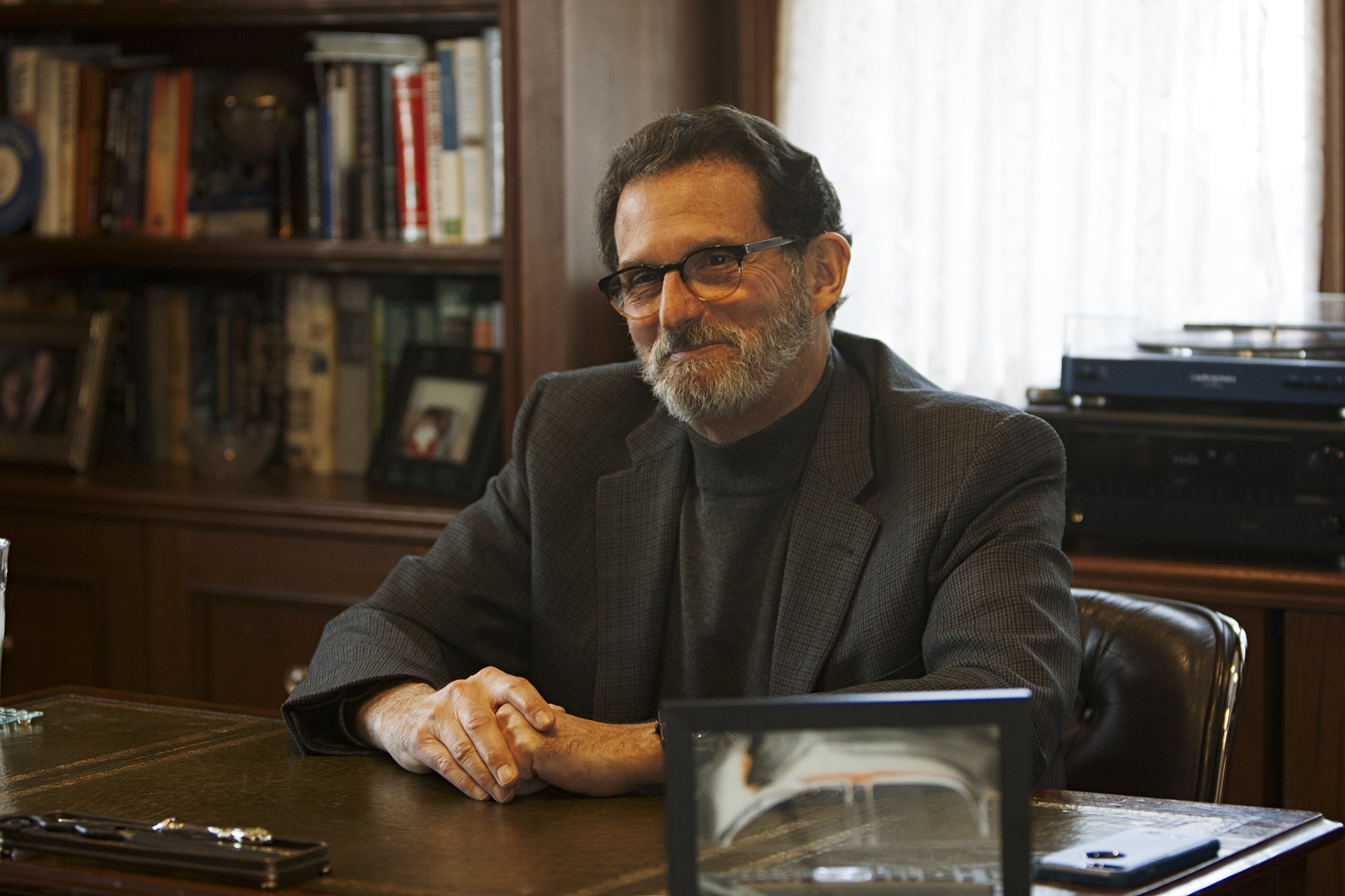by Vivian Henoch
You might say Jeffrey Forman, MD continues to lead a charmed life. “I’ve come pretty close to dying after a bone marrow transplant in 2016,” he says, “so being here every day after that is really a gift.”
Giving back and now going full force at 61, Jeff has enjoyed an extraordinary career in medicine, as well as in volunteer service to the community. Board Certified in Radiation Oncology, he completed his post-doc training at Johns Hopkins Hospital. In his practice spanning more than 35 years, Jeff has had faculty appointments at Memorial Sloan-Kettering Cancer Center, University of Michigan and at Wayne State University, where he served as the Department of Radiation Oncology Chair. Jeff joined 21st Century Oncology as the Medical Director of the Michigan Region and the National Medical Director of Prostate Cancer Research.
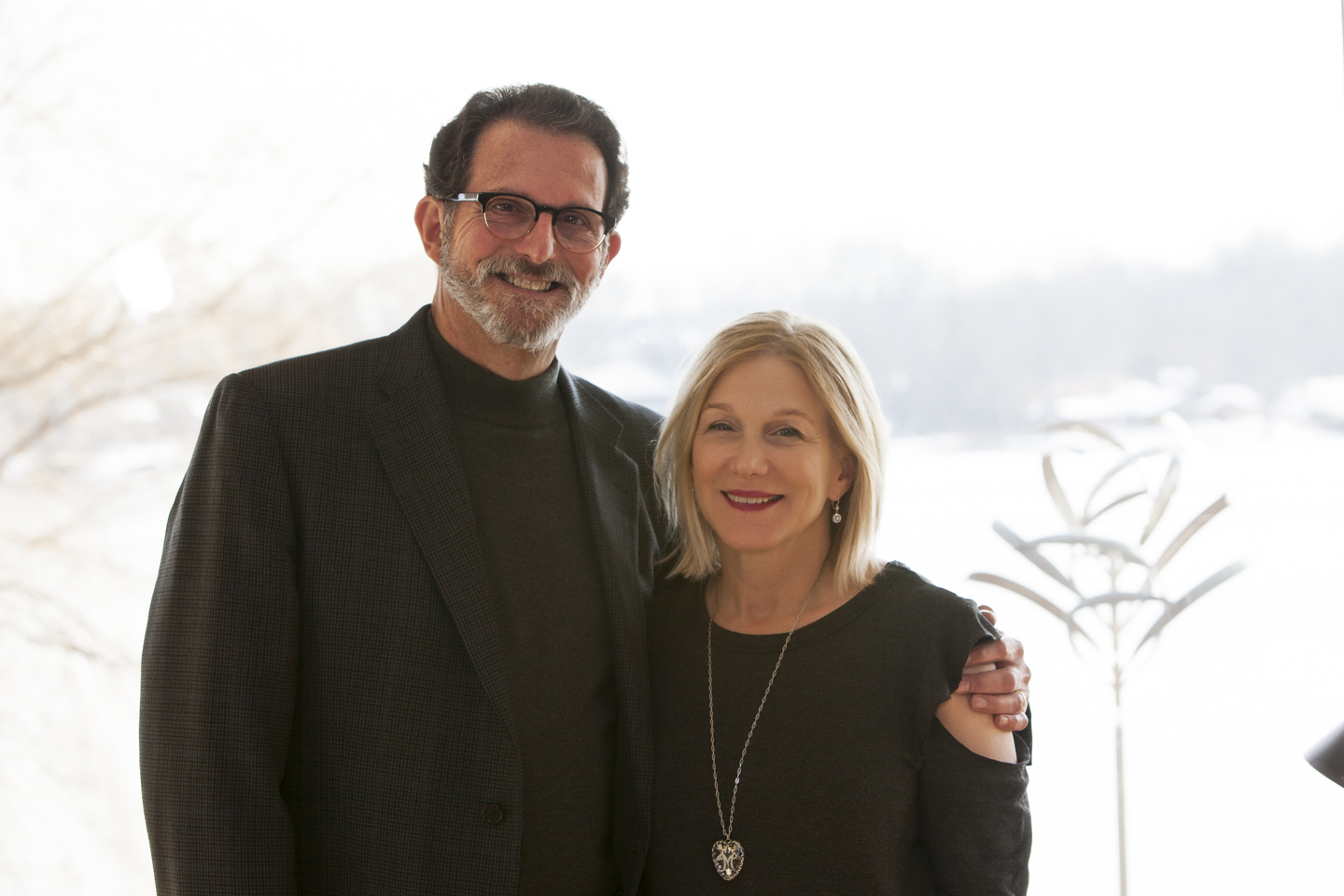
In various roles as an academic physician and community leader, Jeff has served as Medical Director of Development at the Karmanos Cancer Institute and a member of the Project Chessed Board. Currently, he is a member of The Jewish Fund Board, the Medical Director for the LifeLinks Program and continues as Chair and President of the Fund for Cancer Research which he has served for 15 years.
Deeply committed to the work of Federation, Jeff co-chaired Federation’s Annual Campaign in 2014 and 2015. Additionally, he has breathed new life into programming for the Maimonides Society, led several missions to Israel and established the Forman Campaign Leadership Program.
Originally from New York, Jeff and his wife, Miriam, are staunch Detroiters, now residents of Bloomfield Hills. “I can’t think of a better place to be Jewish and to raise our children, and now our grandchildren,” says Jeff. Married for 38 years, the Formans are parents of three and grandparents of three: youngest son, Joshua and his partner, Norah, live in New York; locally the Forman family includes Adam, a practicing oncologist, married to Marianna, with children, Misha and Ori; and Tara, married to Jay Hack with son, Jonah.
In the comfort of his office at home, Jeff describes an incredible journey covering decades of caring for his patients and the community. Excerpts from the conversation follow.
On early years and influences
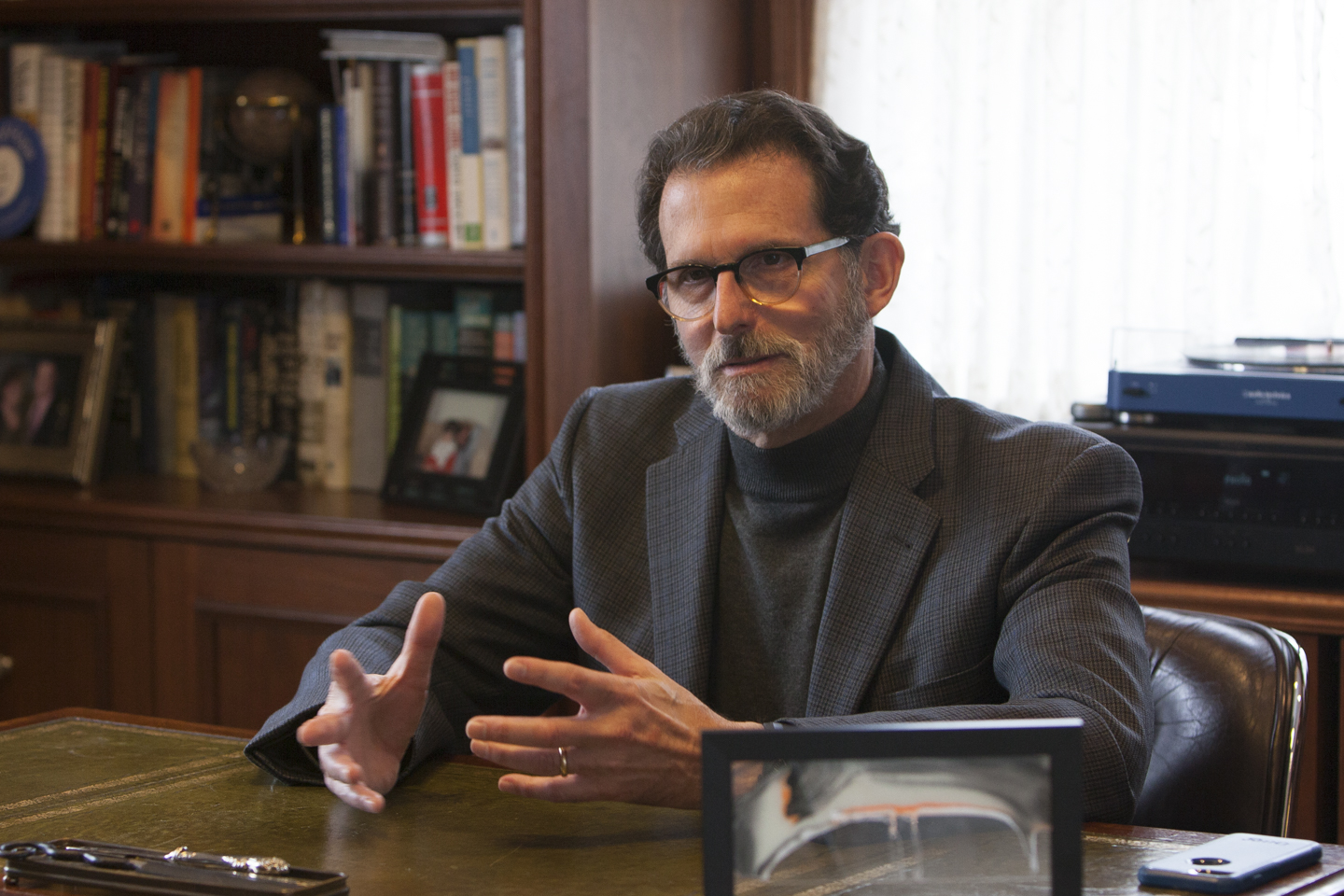
myJewishDetroit: What drew you to medicine?
I wanted to be a doctor almost as early as I can remember. I think the attraction was the perception that doctors had this awesome ability and responsibility to help people. There were no doctors in my immediate family, so my exposure to doctors basically consisted of visits to my pediatrician and watching Marcus Welby on TV.
Why radiation oncology?
I don’t share this often, but my career in radiation oncology started because of an error in scheduling a rotation in medical school. I was originally drawn to oncology because of an experience I had in my psychiatry rotation, where we met a young woman with stage-four cancer. This was just one hour of my entire education, but it determined the trajectory of my career. At the time, I felt a deep connection with the woman (little knowing that I would become a cancer patient myself) because she was suffering and dying at such a young age.
Of all the things I had seen in medicine, the opportunities in oncology to both help people fighting for their lives and to do research in trying to advance medicine seemed the perfect fit. So, I signed up to do an elective oncology rotation in medical school. And by mistake, I ended up in radiation oncology! I had never even heard of radiation oncology! As it turned out, I really enjoyed the math and physics, in combination with the clinical medicine involved. So, by mistake, radiation oncology turned out to be a wonderful career choice.
What brought you to Detroit?
After my post graduate training at Johns Hopkins, I got my first faculty position at Memorial Sloan Kettering Cancer Center in New York. Because my wife, Miriam, and I are both native New Yorkers, everyone thought we’d be there forever once we moved back to New York. As we learned, living in New York as a family with young children, working 12 hours a day, spending 2.5 hours commuting into Manhattan, is not much fun.
As it happened, by the age of 31, I had become a national expert in an area of research that involved computer–aided design and delivering radiation – a growing field subsequently called 3-dimentional treatment planning in 1980s. University of Michigan was very interested in building a strong program based on computer-aided design and they recruited me to move to Michigan. Miriam cried for a few months, but all told, it was the right move for us. We’ve just passed our 30th anniversary of moving to Michigan, and we couldn’t be happier.
How did you meet Miriam?
Miriam grew up in the Bronx, I grew up in Oceanside, we met as freshmen at Union College in Schenectady, New York. We were study buddies in the sciences together; I tutored her in calculus and in April of our freshman year we started dating. That was 43 years ago, and we’ve been together ever since.
On life changes and your changing roles a a physician
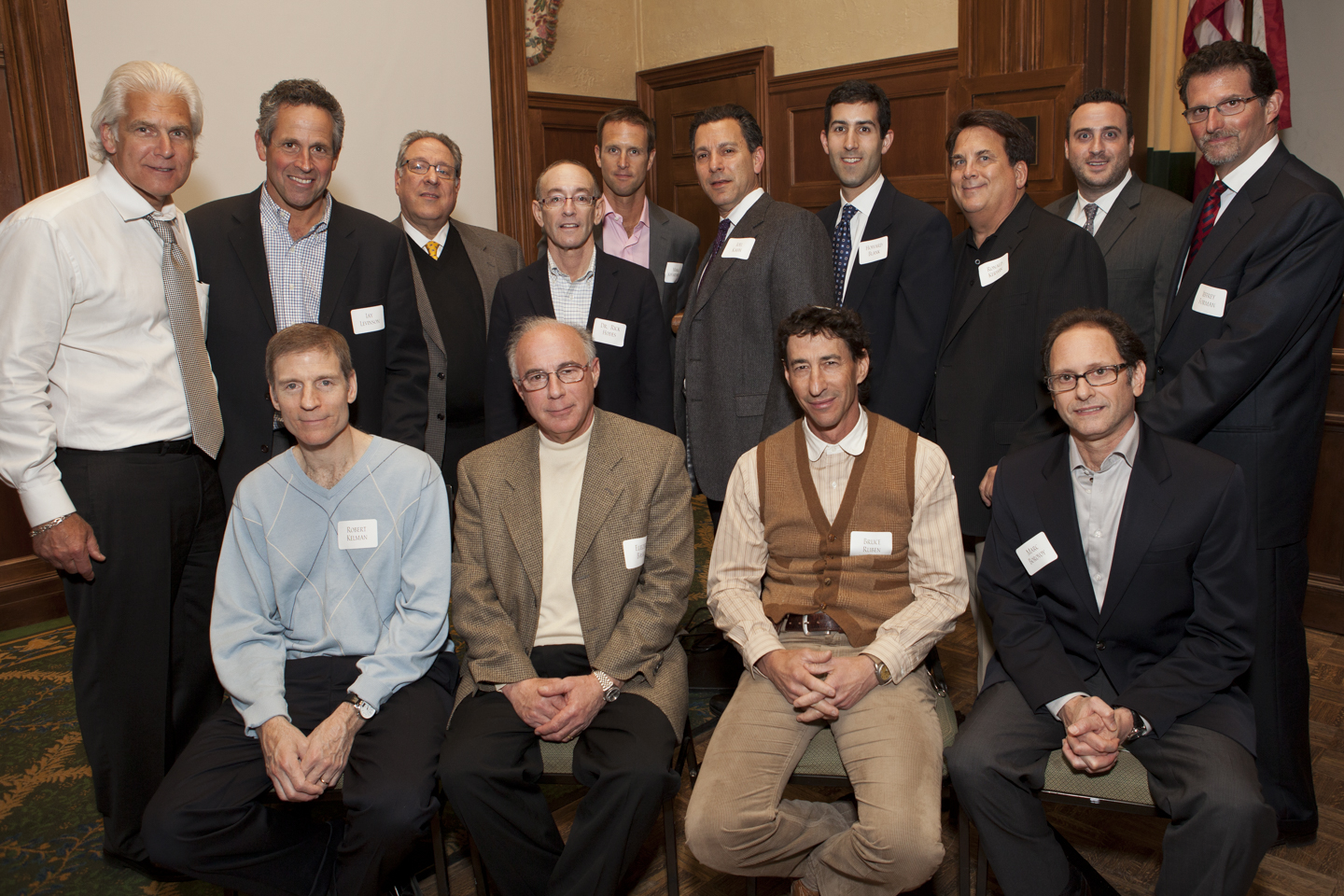
What are your sweetest memories or proudest achievements as a physician?
Clinically, one thing that has made me most proud, and has had the biggest impact on me, happened at the intersection of my Federation life and life as a physician.
It started with the invitation to participate in Federation’s Sherman Leadership Program, after several activities that brought me to the attention of Federation leadership, specifically in the process of reinvigorating the Maimonides Society – a physicians’ affinity group which had been dormant for some time. In my mind, it is important that physicians who are viewed as leaders in the community behave as leaders and take leadership roles within the Jewish community. So, with the goal of reaching and motivating physicians to get more involved in Jewish community life and philanthropy, we reformed the Maimonides Society.
For the two years I served as its Chair, we made a lot of inroads in the programming, brought in speakers of broad interest to the community and, as a result, succeeded in building our numbers. Our model really has helped make the Maimonides Society a more vibrant and connected social affinity for Federation to the benefit of the community.
With the Sherman Leadership Program in 2012, I reaped the benefits of educational sessions featuring phenomenal speakers. I was fortunate in that year that the program culminated in a mission to Ethiopia, then passage to Israel, with one of the last groups of Ethiopian Jews making aliyah. We flew with more than 100 Ethiopians to Israel, but first we spent several days in Gondar understanding where they were coming from – a place nearly impossible to imagine – back in time, like 1000 years ago. It was there that I met Dr. Rick Hodes from the JDC, Federation’s international agency. As JDC’s Medical Director in Ethiopia since 1990, Rick has overseen the medical care for all immigrants from Ethiopia to Israel, managing medical clinics in Gondar and Addis Ababa. Little did I know at the time that Rick would be the doctor about to change my life.
On the day our group was scheduled to visit the Israeli embassy, Rick invited me to visit one of his patients – a young boy with Hodgkin’s lymphoma at the Mother Theresa’s Mission hospital. For lack of a better word, this “hospital” was for the poorest of the poor. Had I not seen with my own eyes, I would never imagine all that I saw there, diseases I had only read about in textbooks, and ward-after-ward where patients slept two to a bed.
The boy’s name was Feleke – the youngest of 11 children in the family living 12 hours away. To pay for the boy’s chemotherapy, his father sold the family herd, then ran out of the money needed to complete the treatment. The boy was dying, alone, a heartbreaking case. As I examined him, Rick asked if there were a way I could treat him. I answered that treating the boy for free was the easy part. Rick then went to his following on his website and, within hours, raised money for the boy’s airline ticket, asked for people to host him and got 20 responses. The family he chose in Ann Arbor, not only hosted and supported him throughout his treatment, they became his guardians. That was six years ago. Feleke is cured, a U.S. citizen today, just recently adopted with the permission of his family – now heading with all probability to the University of Michigan.
I’ve seen a lot of things in my career, done a lot of research, but that experience in Ethiopia— and subsequently treating two more young patients from Ethiopia in similar ways – stays in mind as one of the most satisfying things I’ve ever done as a physician.

In your view, how is healthcare changing today?
I think healthcare is dramatically changing in many ways for the better. Back in the 80s, right out of my training, I caught the wave in radiation oncology in an area where there was astonishing advancement in technology, science and computerization. Had I been five years earlier or five years later, it would not have happened for me. And similarly, I think my son, Adam, is catching the wave in new treatments available in hematology and oncology and, with development of genetically personalized and targeted immunotherapies, the field of oncology is going to explode with new life-saving treatments over the next decade.
The future of medicine in terms of what we can do for patients is unlimited. This also comes at a price and a time when being a physician is harder than it has ever been. So, one of the things that I am doing — a program we started last year — is the Forman Annual Lecture Series focusing on hard realities in the practice of medicine today. In the inaugural lecture of the program, we had a speaker from Harvard to teach physicians how to communicate bad news to seriously ill patients. We drew about 200 physicians, and for the second lecture coming up in October, we’re bringing in Tait Shanafelt, MD, a national expert from Stanford to speak on the topic of physician burn-out and strategies for wellness.
What do you want people to know about hospice care and more specifically the Jewish Hospice and Chaplaincy Network?
Most people don’t understand what the Jewish Hospice and Chaplaincy Network (JHCN) does. And I didn’t completely understand it before I got involved. The key word in Jewish Hospice and Care Network is not Hospice; in my opinion, it’s network. We work to make every hospice into a Jewish hospice experience — meaning that we have Jewish chaplaincy (rabbis) to see patients in any hospice.
In addition, we have social workers to help, to counsel families and to serve as advocates through the process. In end-of-life care, there are no easy answers; families need help in making decisions about what to do, where their loved one is going to live and how to care for them.
In my view, hospice and palliative care – as in every other area of medicine – are areas of healthcare where not everything is known and there’s a tremendous opportunity to do further work and research. And so, in my first year as JHCN Medical Director, I wrote several grants and secured $600,000 in funding for new areas of work, including growing our LifeLinks program and creating a community volunteer program to support family caregivers.
How do you see LifeLinks fitting into the continuum of hospice care as a future model for palliative home care?
LifeLinks is an existing process now. We provide hospice-like care to people who are not eligible for hospice or people who don’t want to be in a hospice program. We deliver symptom management – the palliative care component—and all the other Jewish chaplaincy, Jewish social work components, as well as the enrichment programs to help family care givers. The unique aspect of both Jewish hospice and LifeLinks, is that we don’t charge the patient for our care. It’s all delivered free, thanks to and the support of our Jewish community.
How has your illness and recovery had an impact on your practice of medicine?
I’ve always viewed myself as a caring and empathetic doctor. But being on the other side as a patient, I now understand how I could have done more to identify with my patients’ apprehensions. I think if I were still practicing oncology today, I would do some things differently.
How so?
When patients asked if they were in remission, I used to hate telling them for certain without qualifying the term “remission.” I would respond that being “in remission” means that either the cancer is gone, which is always what we hope, or that it’s still present, but too small to find in an examination at this time, but we may find it later. So, what does that really mean? I was so stubborn about not using the word remission. And, only when I was confident that a patient was cancer-free, I’d happily say that he or she was cured.
As a patient, I had an entirely different perspective. The first time my physician said to me that there was no sign of cancer in my blood and told me that, from all indications, I was in remission, I cried like a baby. To me it was so meaningful to hear the word remission as a patient. And so, I wish I could go back in time and say to the patients who would have responded similarly to me– I could still explain the limits of what it might be, but I could still say the words, “In my opinion, as of now, you are in remission! And things couldn’t be any better.” I don’t know why I was so rigid about that, but when I look back, I would do it differently.
The experience of having been both doctor and patient in the same specialty gives me a unique perspective. I wish I hadn’t gone through it, but I cherish the knowledge that I gained as a result.
On Jewish community leadership
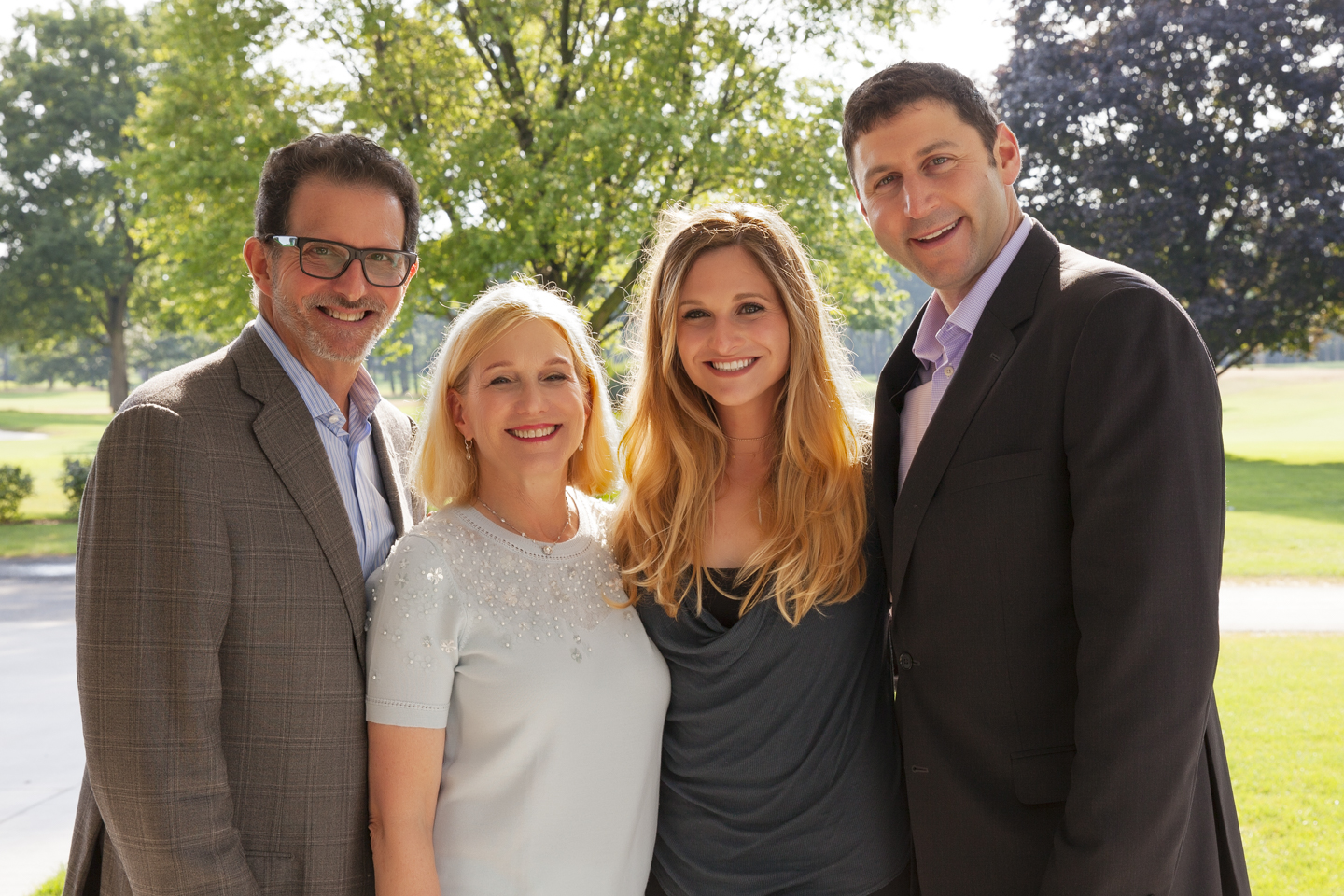
Clearly, you have a passion for Jewish communal work. Where did it start and how did you get involved with the Detroit Federation?
I had no idea what Federation was or what it did until we moved to Detroit and I had some discretionary money to give to charity. All I knew was that Federation was something a lot of people seemed to support, so every year I wrote what I thought was a generous check.
Sometime during that period, I became a professional fundraiser as the Medical Director of Development at Karmanos. And I saw how we approached raising money — and it was not the way I understood how Federation approached it. In my experience, Federation approached fundraising as an annual call for my pledge – without knowing me at all. As I was learning at Karmanos, when we ask people of means for a contribution, we do our research. And if you look online, there’s a lot of information available as to what people make, what they support, how much they have given in the past, what their points of contact with the organization are – all kinds of information that would be valuable to the discussion with them.
So, I decided if people from Federation were going to call me and ask me for a gift, I would do some research myself to find out what level of gift was of sufficient capacity for people in my income bracket. And there I learned just how far I had fallen short with my previous contributions.
And so, with that next volunteer caller from Federation, asking for a moderate increase in my pledge, I said, “No offense to you, but take me to your leader.” That was the start of a more in-depth discussion with Federation’s Campaign Director – and an increase in my gift by 15-fold.
Naturally, as a result of that conversation, I got on the leadership radar, and everything that followed as I took the helm of the Maimonides Society, participated in the Sherman Leadership Program and became Annual Campaign Co-Chair.
Please share your thoughts on establishing the Forman Campaign Leadership Program.
I would view it as a work in progress – an area that we have made a lot of inroads with the Maimonides affinity group as the driver. Given the model of both the Sherman and Grosfeld Leadership Development Programs, Miriam and I decided that we wanted to propagate the concept specifically for physicians. So, we established the Forman Leadership Program that provides physicians an eight-session education into Federation and its family of agencies. The program culminates in a mission to Israel, intentionally orchestrated to develop a strong cohort of physician leaders for the future. We are in the process of developing a second-year curriculum with a trip to Israel scheduled in the fall of 2019.
What do you tell a young physician considering moving back or to the Detroit area for the first time?
Other than the weather? I don’t think there could be a better place to be – working as a physician, raising a family, living in a Jewish community. In Detroit, I feel the presence of the Jewish community to a much greater degree than I ever did in all the years when we lived in New York – where there are more Jewish people than in Israel.
What do you dream for the next five years?
Number 1 is staying alive and well to enjoy being with my family and watching them grow up. I’m also thinking about spreading my wings a bit more in the philanthropic world. Based on my career and my personal experience as a cancer patient, I’m committed to supporting further advancements in cancer through research. I’m seeking a mechanism that allows me to do that in a more meaningful way than I currently am. If you ask me what’s on tap – that’s what I’m most thinking about.
Reading now? What’s on your night stand?
A pile-up of some 30 books! (I’m still an academic at heart). I read detective novels for pleasure, but these days, most of the books that I’m reading are related to my work in hospice care. I have a grant from The Jewish Fund to continue my education; and I’m working towards certification in a program at Harvard. In the meantime, I’ve been delving into all sorts of academic articles.
Words to live by:
The most important people in your life are your family. You need to appreciate them every day.

